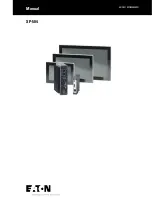
Installation and Operational Instructions for
EAS
®
-Compact
®
overload clutch Type 49_._ _4._
Sizes 01 to 3
(B.4.14.1.EN)
13/11/2017 GC/NU/GH/SU
Chr. Mayr GmbH + Co. KG
Eichenstraße 1, D-87665 Mauerstetten, Germany
Tel.: +49 8341 804-0, Fax: +49 8341 804-421
Page 18 of 19
Malfunctions / Breakdowns Type 494._ _ 4._ (continued)
Malfunction
Possible Causes
Solutions
Premature wear
on the elastomeric
element
e.g. contact with
aggressive liquids / oils, ozone
influences,
excessively high ambient temperature
etc.,
which lead to physical changes in the
elastomeric element
1)
Set the system out of operation
2)
Dismantle the clutch and remove the remainders of the
elastomeric element
3)
Check the clutch parts and replace if damaged
4)
Insert a new elastomeric element, install clutch components
5)
Check the alignment and correct if necessary.
6)
Make sure that further physical changes to the elastomeric
element can be ruled out
The ambient or contact temperatures
permitted for the elastomeric element
are exceeded
1)
Set the system out of operation
2)
Dismantle the clutch and remove the remainders of the
elastomeric element
3)
Check the clutch parts and replace if damaged
4)
Insert a new elastomeric element, install clutch components
5)
Check the alignment and correct if necessary.
6)
Check the ambient or contact temperature and regulate them
(if necessary, use other elastomeric element materials)
Premature wear
on the elastomeric
element (material
liquidation inside the
elastomeric element
toothing)
Drive vibrations
1)
Set the system out of operation
2)
Dismantle the clutch and remove the remainders of the
elastomeric element
3)
Check the clutch parts and replace if damaged
4)
Insert a new elastomeric element, install clutch components
5)
Check the alignment and correct if necessary.
6)
Find the cause of vibration (if necessary, use an elastomeric
element with a lower or higher shore hardness)


































